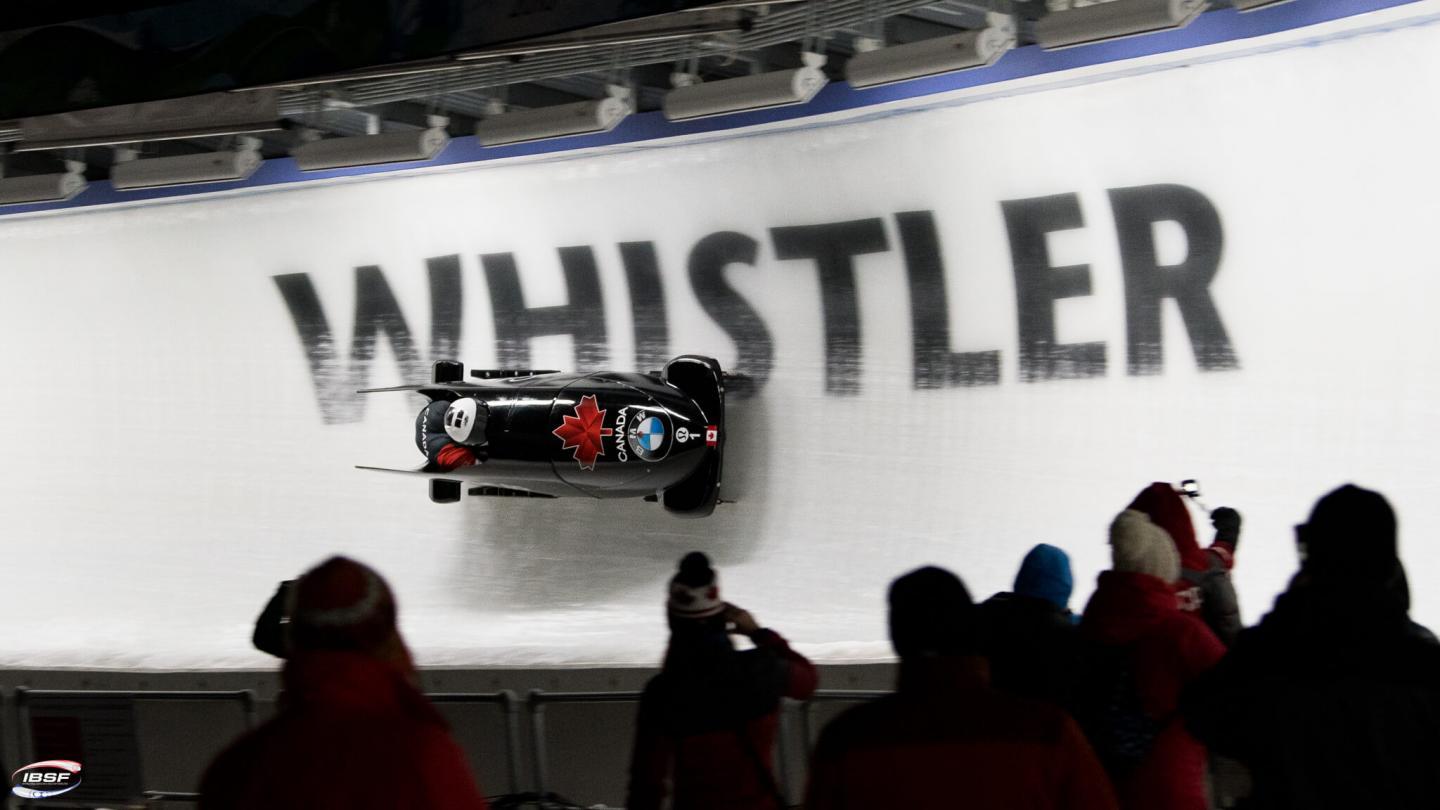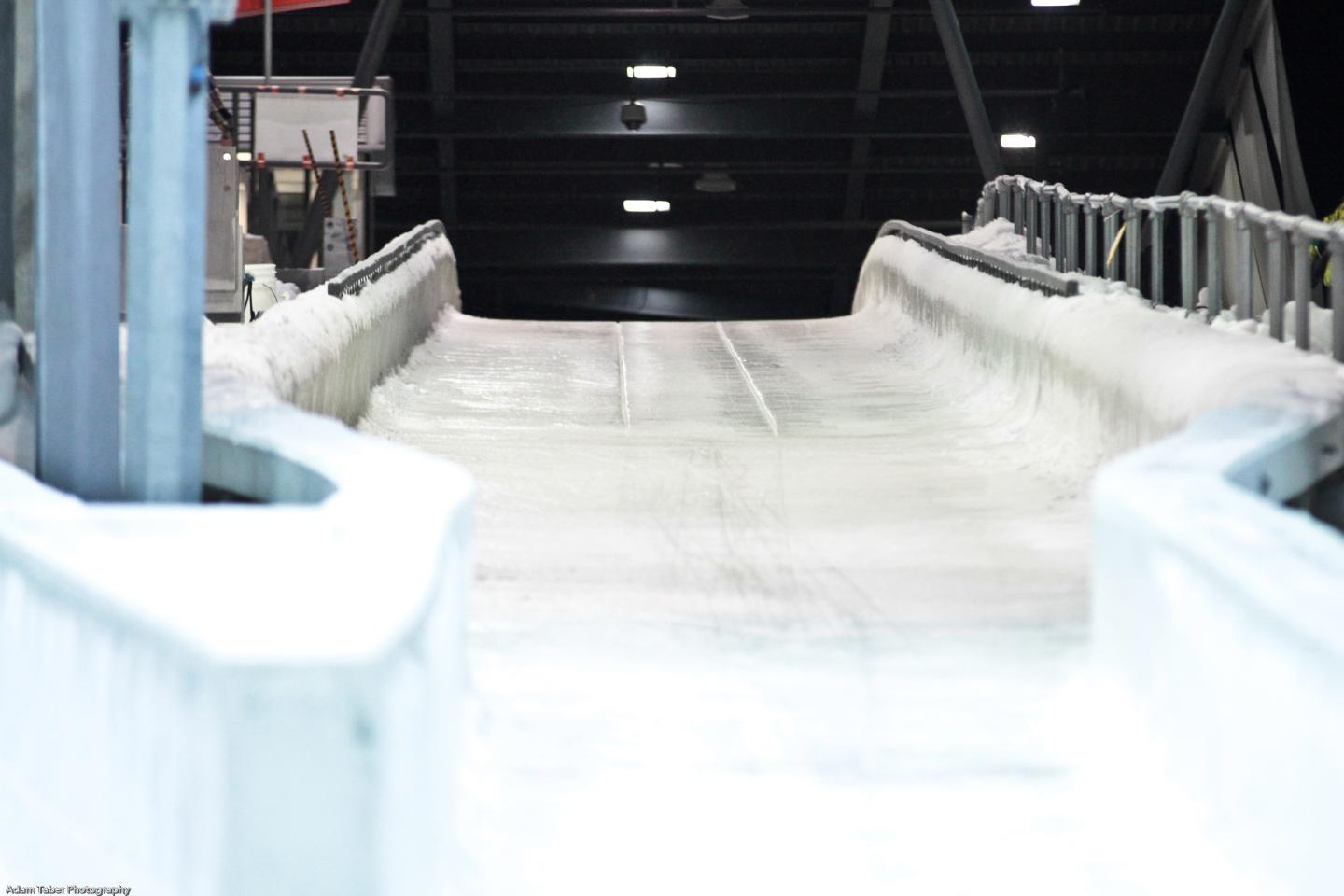About Us

Welcome to the Whistler Sliding Centre, the only track of its kind in Canada!
Located above Whistler Village on the side of Blackcomb Mountain, the non-profit Whistler Sliding Centre is a world-class bobsleigh, skeleton and luge facility. Public visitors can try Whistler's most unique activities, Passenger Bobsleigh and Public Skeleton in winter, as well as Summer Bobsleigh.
Aspiring athletes can join "Learn to Slide" programming for all skill levels in bobsleigh, skeleton and luge within the BC Sliding Development Centre. The facility is also a National Training Centre and popular training and competition venue for athletes from all over the world. Each year, races for all levels from beginners to the elite of sliding athletes, such as World Cups and World Championships are held on the Olympic legacy venue.
Year-round, Olympic Sightseeing is available free of charge through a self-guided interpretive tour.

Track Stats
- Track length: 1,450 metres, 16 curves
- Elevation top start: 938 metres, drop to lowest point: 152 metres
- Fastest track in the world: No uphill sections until final “Thunderbird” corner
- World’s steepest drop (20%, corner 2)
- On-ice operations from October to March, about six months/year
- Off-ice operations April to September (wheeled luge athletes training, public summer bobsleigh programs)
- Entire track is groomed/maintained by hand! Daily during the winter, the track crew preps the track by hand. It takes 10 track workers two hours to do the whole track top to bottom!

Timeline
History/Sporting Highlights
2005— Construction Started
2008: First runs
2010: Olympic and Paralympic Winter Games
2013: Luge World Championships
2019: Bobsleigh & Skeleton World Championships
2025: Luge World Championships
World Cups: Annually since 2009
Homegrown Olympians
Track Records
Current to December 10, 2022
Skeleton |
||||
| Women | Start | 4.74s | B. Crowley (GBR) | 24-Nov-22 |
| 4.76 | J.Channel (CAN) | 23-Nov-22 | ||
| Finish | 53.10s | J. Loelling (GER) | 8 Mar 2019 | |
| 53.37 | M.Rahneva (CAN) | 20-Nov-22 | ||
| Speed | 144.8 km/h | J. Loelling (GER) | 8 Mar 2019 | |
| Men | Start | 4.46s | M. Wyatt (GBR) & M. Weston (GBR) | 24-Nov-22 |
| 4.53 | K.Boyer (CAN) | 20-Oct-18 | ||
| Finish | 51.91 | M. Dukurs (LAT) | 7-Mar-19 | |
| 52.16 | D. Greszczyszyn (CAN) | 8-Mar-19 | ||
| Speed | 146.4 km/h | A.Tretiakov (RUS) | ||
Bobsleigh |
||||
| W2 Women | Start | 5.06s | E.Meyers Taylor / K.Jones (USA) | 24-Nov-17 |
| Finish | 52.01 | M.Jamanka / A.Drazek (GER) | 3-Mar-19 | |
| 52.42 | K.Humphries/C Appiah (CAN) | 21-Oct-16 | ||
| Speed | 150.1 km/h | M.Jamanka / A.Drazek (GER) | 3-Mar-19 | |
| W1 Monobob | Start | 5.36 | C. Appiah (CAN) | 10-Nov-22 |
| 5.36 | C. Appiah (CAN) | 10-Nov-22 | ||
| Finish | 54.82s | K.Humphries (USA) | 9-Nov-22 | |
| 55.62 | B.Ribi (CAN) | 8-Nov-22 | ||
| Speed | ||||
| 2Man | Start | 4.70 s | B.Hefti/T.Lamparter (SUI) | 6-Feb-09 |
| 4.75 s | L.Rush/L.Brown (CAN) | 20-Feb-10 | ||
| Finish | 50.96 | J.Kripps / C.Stones (CAN) | 1-Mar-19 | |
| 50.96 | J.Kripps / C.Stones(CAN) | 1-Mar-19 | ||
| Speed | 153.09 km/h | J.Kripps / C.Stones (CAN) | 1-Mar-19 | |
| 4Man | Start | 4.69 s | O.Kibermanis/M.Miknis/A.Vilkaste/J.Strenga (LAT) | 8-Mar-19 |
| 4.72 s | L.Rush/C.LeBihan/D.Bissett/L.Brown (CAN) | 26-Feb-10 | ||
| Finish | 50.05s | O.Kibermanis/M.Miknis/A.Vilkaste/J.Strenga (LAT) | 8-Mar-19 | |
| 50.13 | J.Kripps/R.Sommer/C.Stones/B.Coakwell (CAN) | 8-Mar-19 | ||
| Speed | 157.06 km/h | F.Friedrich/C.Bauer/M.Grothkopp/T.Margis (GER) | 9-Mar-19 | |
Wedge
Curve 3: Coined by venue director of the time as a nod to locally iconic Wedge Mountain
Leuder’s Loop
Curve 7: a tribute to Pierre Lueders the most decorated Canadian Bobsleigh athlete at the time the track opened. He was pilot of the first sled on the track (with Justin Kripps as brakeman). The run was taken starting at entrance to the curve bearing his name on December, 19 2007.
Str8
Curve 8: a play on words/numbers because it is a flat section of track with a slight bend to it that is almost straight.
Lynx
Curve 9 and 10 together: a double meaning for these two back to back left hand curves. ‘Links’ means left in German, Also Lynx’s are seen in the vicinity of this section of track periodically
Maple Leaf Start
Used for public skeleton programs and development Luge, because no body wants to be called a tourist! The Maple leaft is a connection to our Canadian identity
Shiver
Curve 11: for the uneasy feeling that athletes get when they experience it for the first time. The double oscillation as the gradient drops away then flattens at the end is challenging
Goldrush Trail
Curves 12 through Curve 15: the labyrinth section of track with rapid lefts and rights; double meaning. Nail it and you have a real shot at a Gold Medal; also a nod to the BC Gold Rush trail which passed near the region in the early 1860’s. The trail was known for gnarly twists and turns along canyon walls
Holky’s 50/50
Curve 13: Coined by Steve Holcomb, the Gold medal winning U.S. 4man pilot in 2010, and his coaches during first international runs taken on the track to exaggerate the chance of making through the curve with out crashing.
Thunderbird
Curve 16: An honour to the First Nations traditional stories on whose traditional territory the track is situated. As sleds approach and blitz through this curve at maximum speed, sweep around 180 degrees, they create a stunning rumbling sound, akin to a building thunderstorm. It is the sound of Thunderbird, flapping its huge wings; and of the wind whipping through Silus’ hair—the sounds of the spirits of this land. Maximum speed and g-forces are experienced here, as athletes feel up to five times their body weight when entering this curve.

